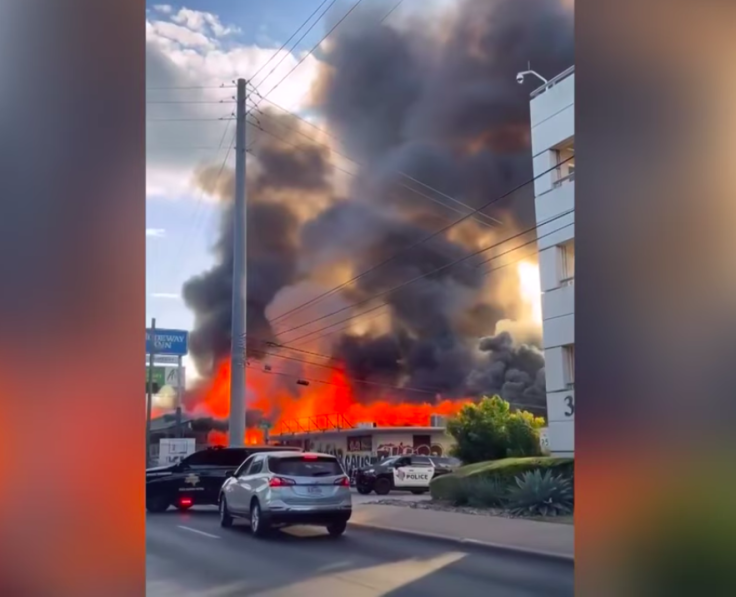Smoke from Wildfires Chokes Austin: What Locals Are Breathing Tonight

Austin residents reported acrid haze during the night of 5 October 2025 as a vacant motel and neighbouring restaurant near I-35 burned, and smoke from distant wildfires drifted across Central Texas.
The Fire Department units arrived to find an abandoned hotel fully engulfed in flames near the 2900 block of the North I-35 service road. Crews contained the blaze and reported no injuries, according to the Statesman.
City and health officials have advised vulnerable groups to limit outdoor exertion and monitor real-time alerts for updates.

Smoke from Distant Wildfires Adds to the Problem
According to a forecast from the Texas Commission on Environmental Quality (TCEQ), light-density smoke from active wildfires in southern Canada, the Pacific Northwest and the Mississippi Valley is expected to linger over Central and North Central Texas tonight which means delicate particulate matter (PM2.5) concentrations may slip into the 'Moderate' range in some zones, TCEQ reported
Air Quality 'Good' but Fragile
Air quality monitors currently report Austin's index in the 'Good' bracket, with a PM2.5 reading of roughly 4.2 µg/m³, according to IQAir.
Even so, doctors say conditions can worsen quickly, particularly in areas with low ventilation or during shifts in wind direction.
Doctors Warn of Health Effects
Local physicians report an increase in patients complaining of coughing, throat irritation, or shortness of breath.
Some warn that even short exposure to wildfire smoke can inflame airways and aggravate chronic lung or heart conditions, according to a KVUE report.
One respiratory specialist quoted in KVUE cautioned that repeated or extended exposure to smoke can reduce lung function and worsen chronic respiratory disease.
The health message for tonight is clear: vulnerable groups, such as children, the elderly, and those with asthma or cardiovascular disease, should avoid strenuous outdoor activities.
City Urges Residents to Stay Alert
The City of Austin's real-time fire incident page continues to list active alarms, while officials have urged residents to register for smoke alerts and heed any emergency updates.
This isn't the first time smoke has travelled into Austin from outlying fires.
Earlier in 2025, the 'Crabapple' wildfire near Fredericksburg sent plumes of smoke as far as the city, darkening skies and prompting air quality warnings across Central Texas, according to a report by the Houston Chronicle.
The fire reportedly burned over 8,600 acres and was only partially contained, with spot outbreaks continuing.
Austin Boosts Wildfire Readiness
To improve wildfire preparedness, the City of Austin recently updated its risk maps, now classifying more than half of its habitable land as vulnerable to fire, according to Air Central Texas.
Meanwhile, the city is deploying new technologies: Austin Energy has partnered with Pano AI to install 360-degree cameras across Central Texas, using artificial intelligence to detect fires early, according to an Axios report.
Locals Brace for a Smoky Night
As night deepens, Austinites say they feel uneasy stepping outdoors. Some plan to wear N95 masks if venturing out; others intend to delay evening errands until the air clears.
Many are keeping windows closed and turning on air filtration devices.
The forecast suggests the plume may persist for some time. City health officials advise residents to monitor local air quality alerts, reduce indoor pollution sources, and minimise outdoor exposure while smoke remains in the air.
© Copyright IBTimes 2025. All rights reserved.



















